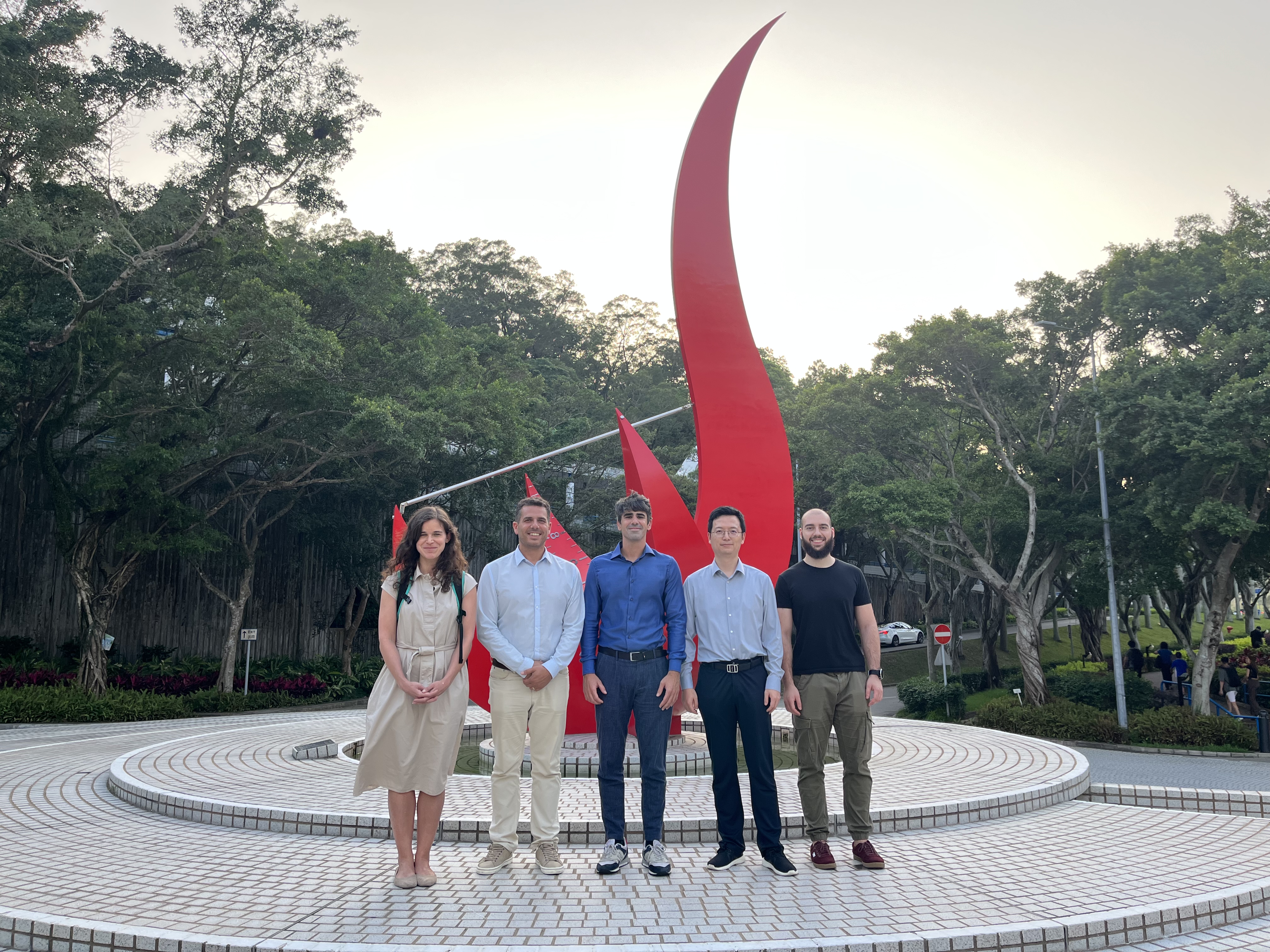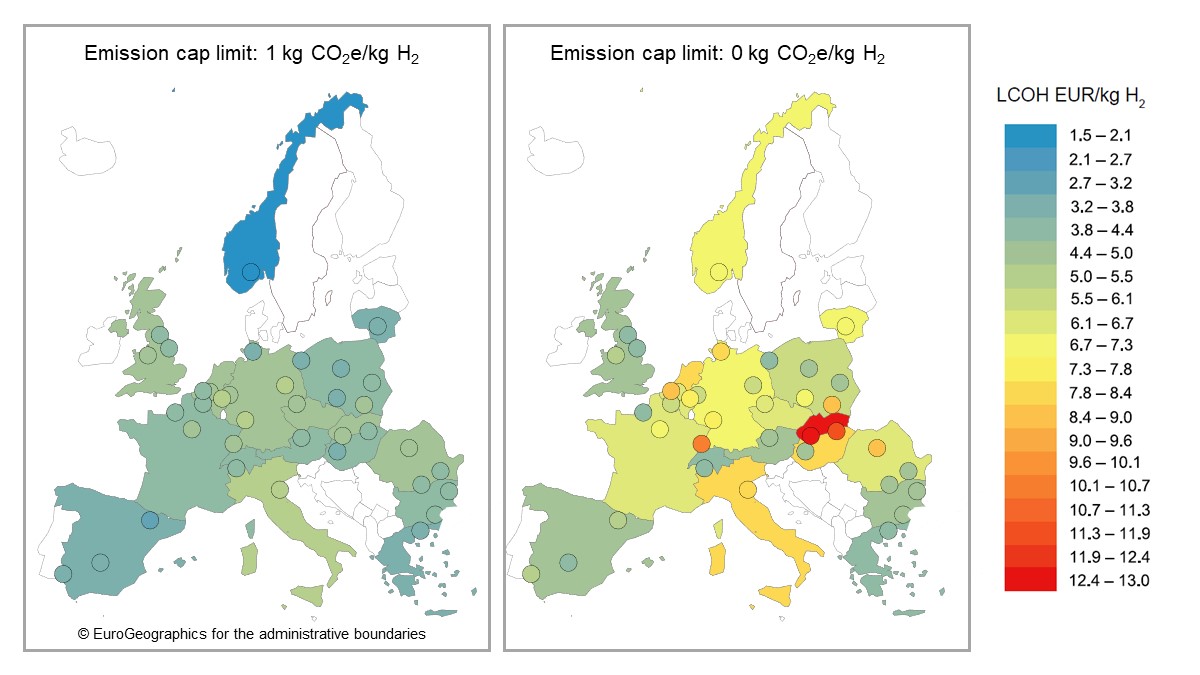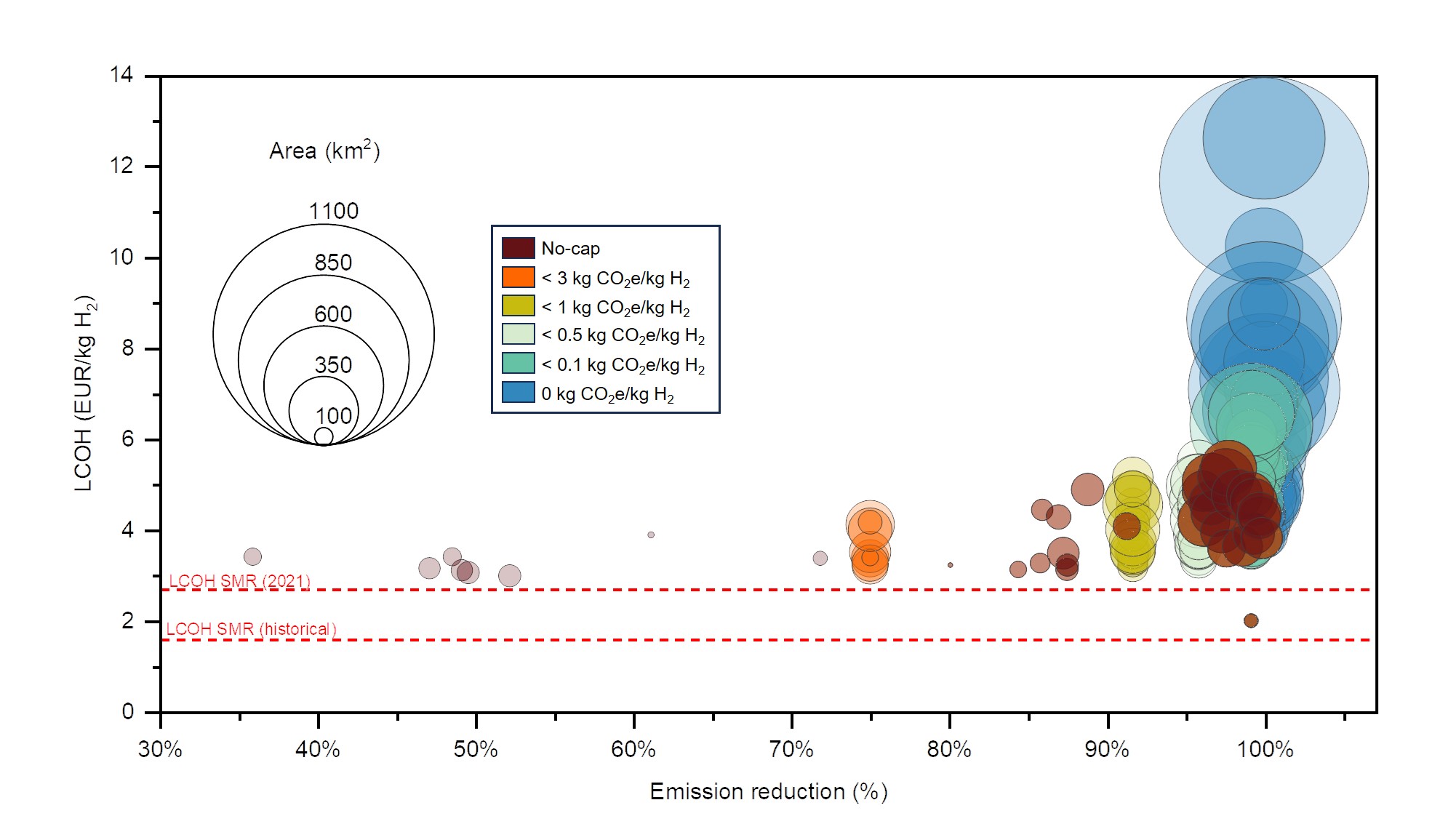An international cross-disciplinary research team led by the Hong Kong University of Science and Technology (HKUST) has revealed critical insights into how strategic emission cap choices can lead to cost-effective, near-100% ammonia industry decarbonization while avoiding issues such as land use constraints and grid congestion. This groundbreaking study is the first to identify cost-optimal characteristics for ammonia production plants and emission reduction targets.
Ammonia production, which accounts for 36 million metric tons of carbon dioxide emissions annually in Europe, primarily relies on hydrogen derived from fossil fuels. These emissions could be drastically reduced by electrolytic hydrogen – producing hydrogen via water electrolysis – as it only requires electricity, which could be generated by renewable sources.
However, transiting to low-carbon alternatives, particularly electrolytic hydrogen using grid electricity, poses major economic and logistical challenges as the complex impact of regional factors – including the availability of renewable resources and the carbon intensity of local electricity production – on the relationship between emission standards and costs is not well understood.
To fill this gap, a team led by Prof. LU Zhongming, Assistant Professor of HKUST’s Division of Environment and Sustainability (ENVR), Prof. Magdalena KLEMUN, Assistant Professor of HKUST’s Division of Public Policy (PPOL), Dr. Stefano MINGOLLA, PhD Graduate of HKUST’s ENVR in collaboration with ETH Zurich, has examined the impact of a range of emission caps on costs and the feasibility of transitioning to renewable-based electrolytic hydrogen production in Europe, leveraging high-resolution renewables data from 38 European locations and spanning the years 2024 to 2050. While the data inputs and results are EU-specific, the approach can be useful for other hard-to-abate sectors transitioning to low-carbon fuels.
They identified that achieving ambitious emission reduction targets, such as cutting emissions by 95% compared to current levels, is feasible with minimal cost escalation over less stringent targets proposed by regulatory bodies like the European Commission. However, transitioning to 100% emission reduction – operating entirely off-grid with renewable energy sources – presents substantial cost and land use implications, particularly in regions with resource limitations.
“Strategic choices in setting emission caps are pivotal for the ammonia industry's transition to low-carbon technologies,” Prof. Lu said.
Prof. Klemun added, “This study provides vital insights for policymakers aiming to balance environmental goals, costs, and resource availability.” The team highlights the need for strategic choices of emission caps, combined with investments in technology innovation, to improve flexible plant designs that can accommodate varying renewable energy availability to mitigate costs and land requirements associated with off-grid production.
Policymakers could set more stringent decarbonization targets for regions that present a combination of favorable conditions for the deployment of electrolytic hydrogen that can allow near-zero emissions while bearing minimal or no cost increases compared to fossil-based hydrogen production, while less stringent or delayed measures could apply to other regions.
“By adopting region-specific, phased strategies and prioritizing plant flexibility, the hard-to-abate industry can better manage its transition to low-carbon technologies while maintaining competitiveness,” Dr. Mingolla said.
The findings of their study were recently published in Nature Communications, by lead author Dr. Stefano MINGOLLA, co-leads Prof. LU Zhongming and Prof. Magdalena KLEMUN, and group members Prof. Francesco CIUCCI from HKUST’s Department of Mechanical and Aerospace Engineering, Prof. Giovanni SANSAVINI and Dr. Paolo GABRIELLI from the Department of Process Engineering at ETH Zurich, Alessandro MANZOTTI and Matthew ROBSON, and Dr. Kevin ROUWENHORST from the Ammonia Energy Association.










